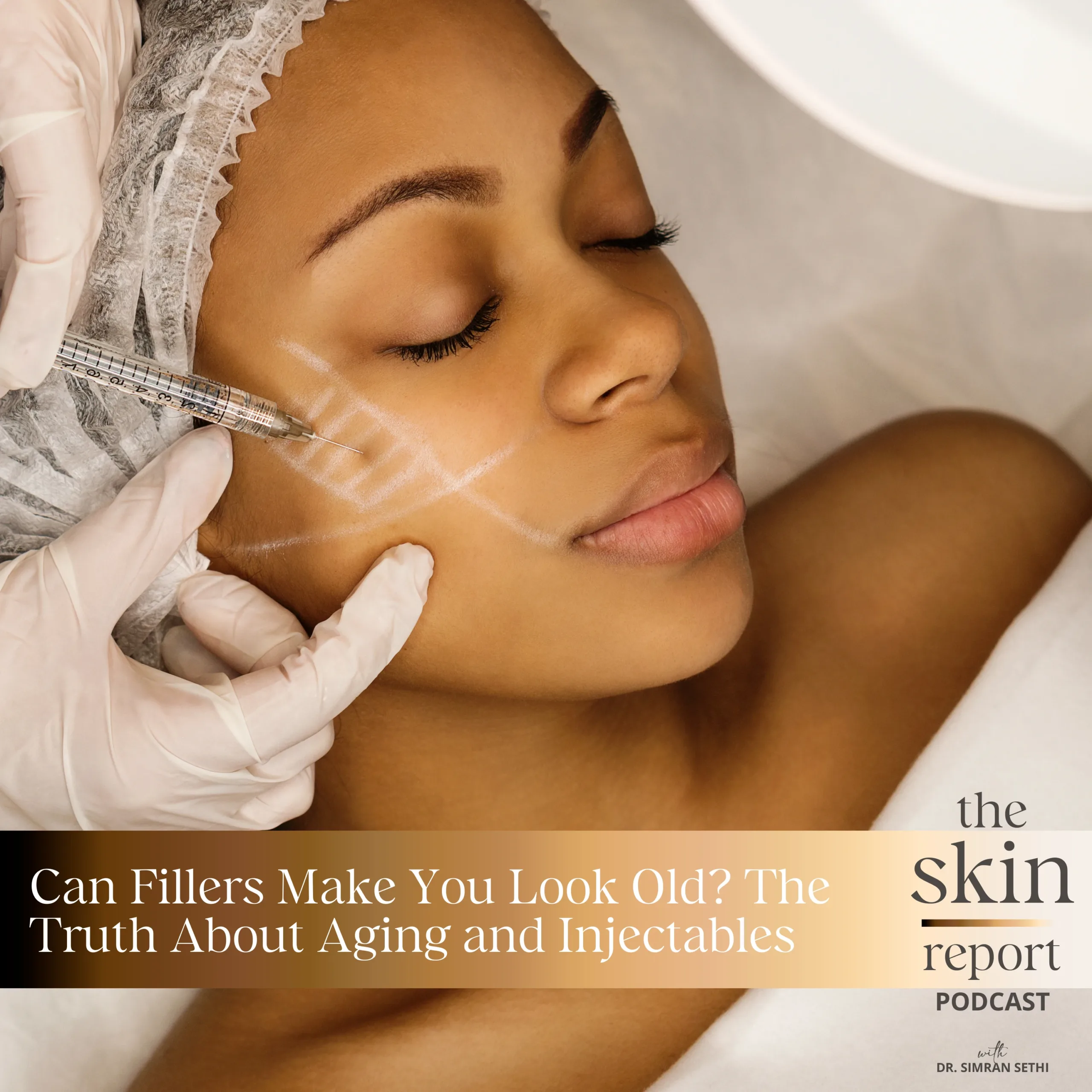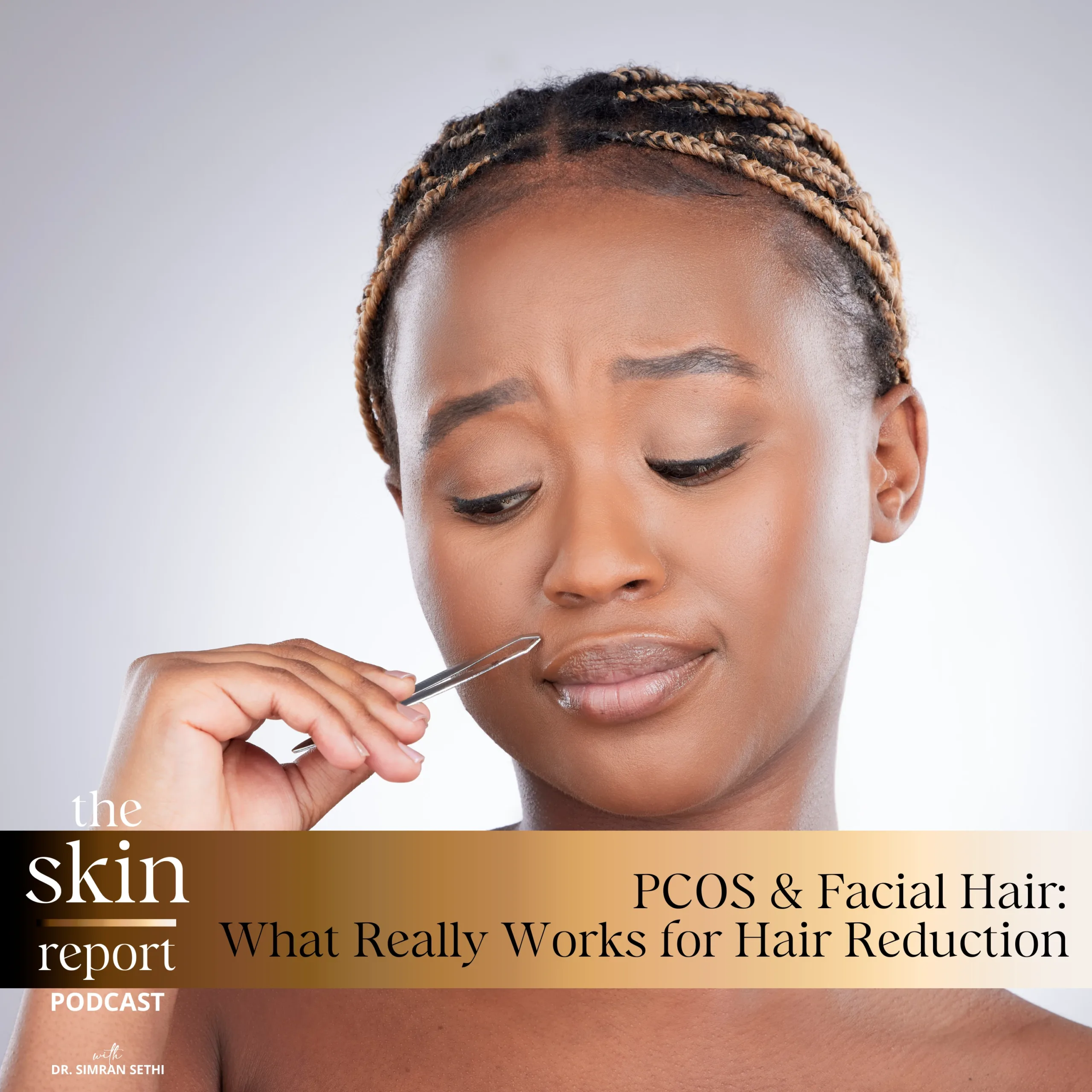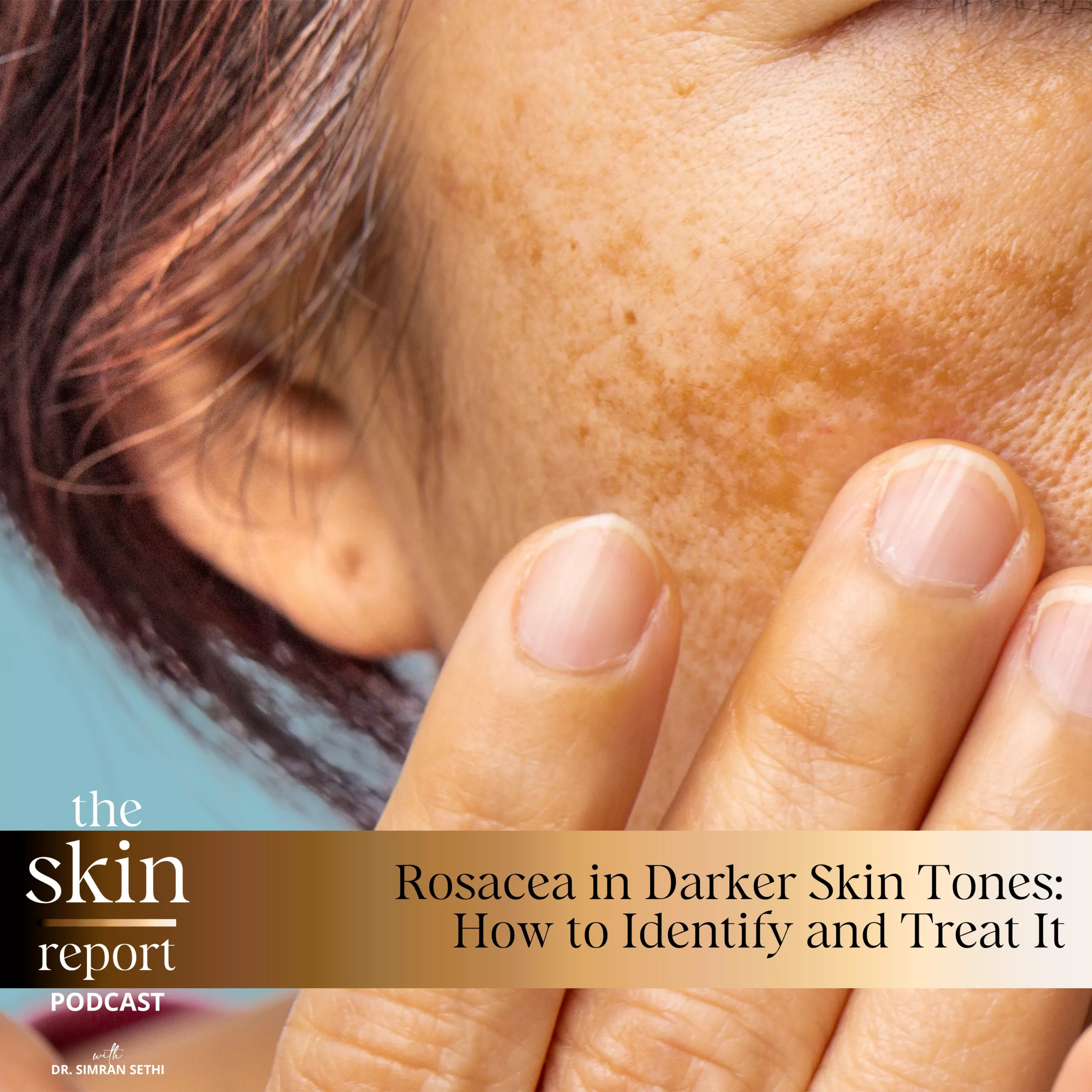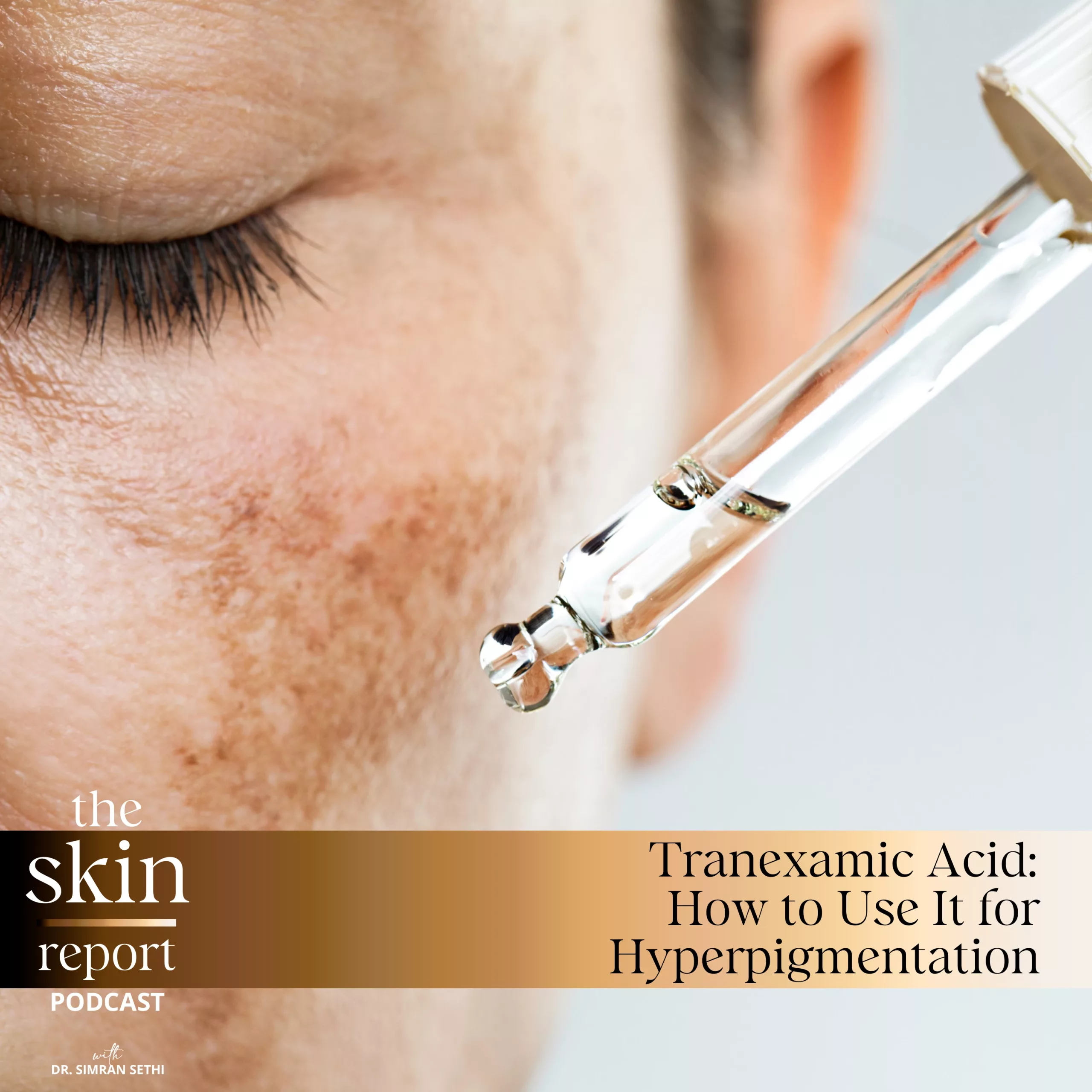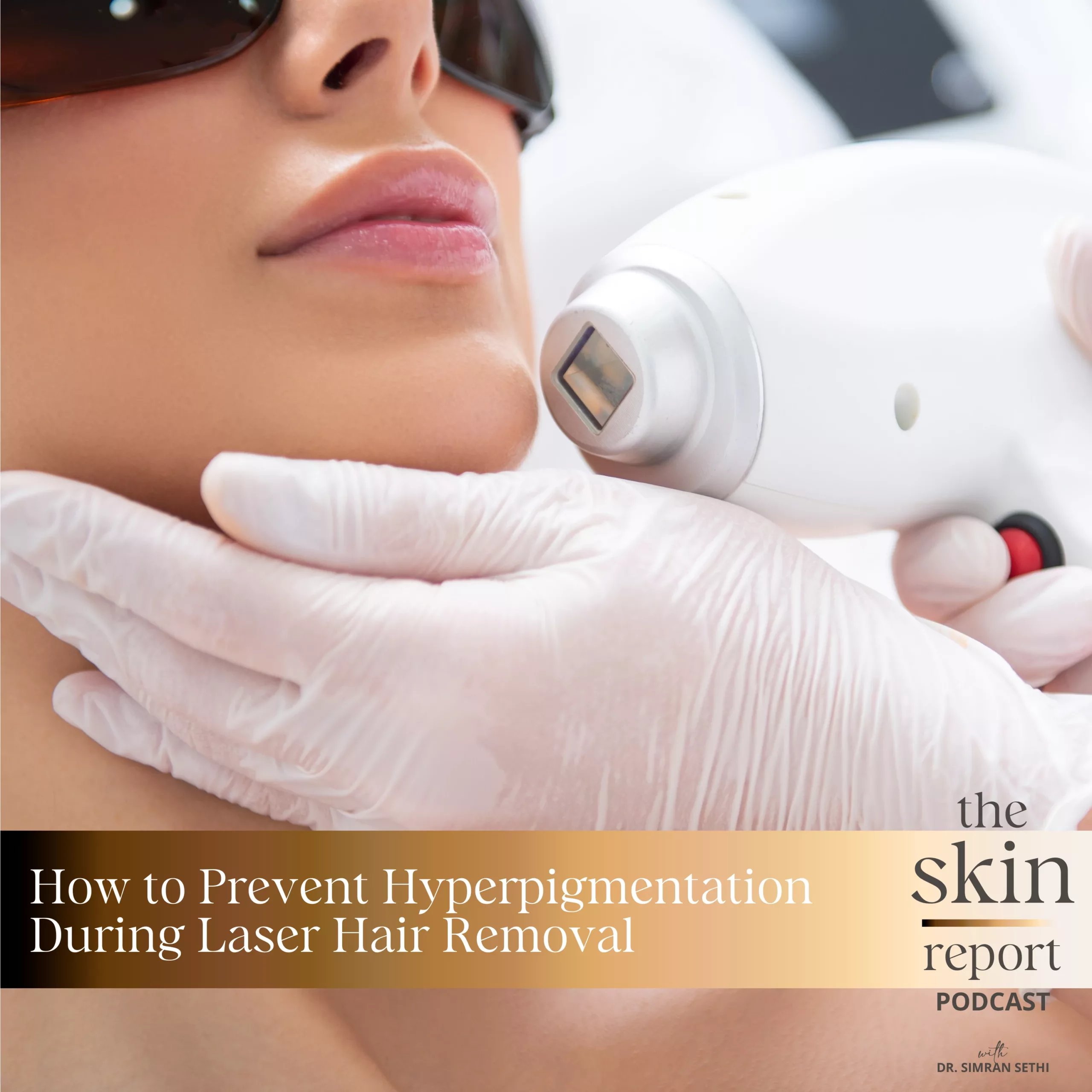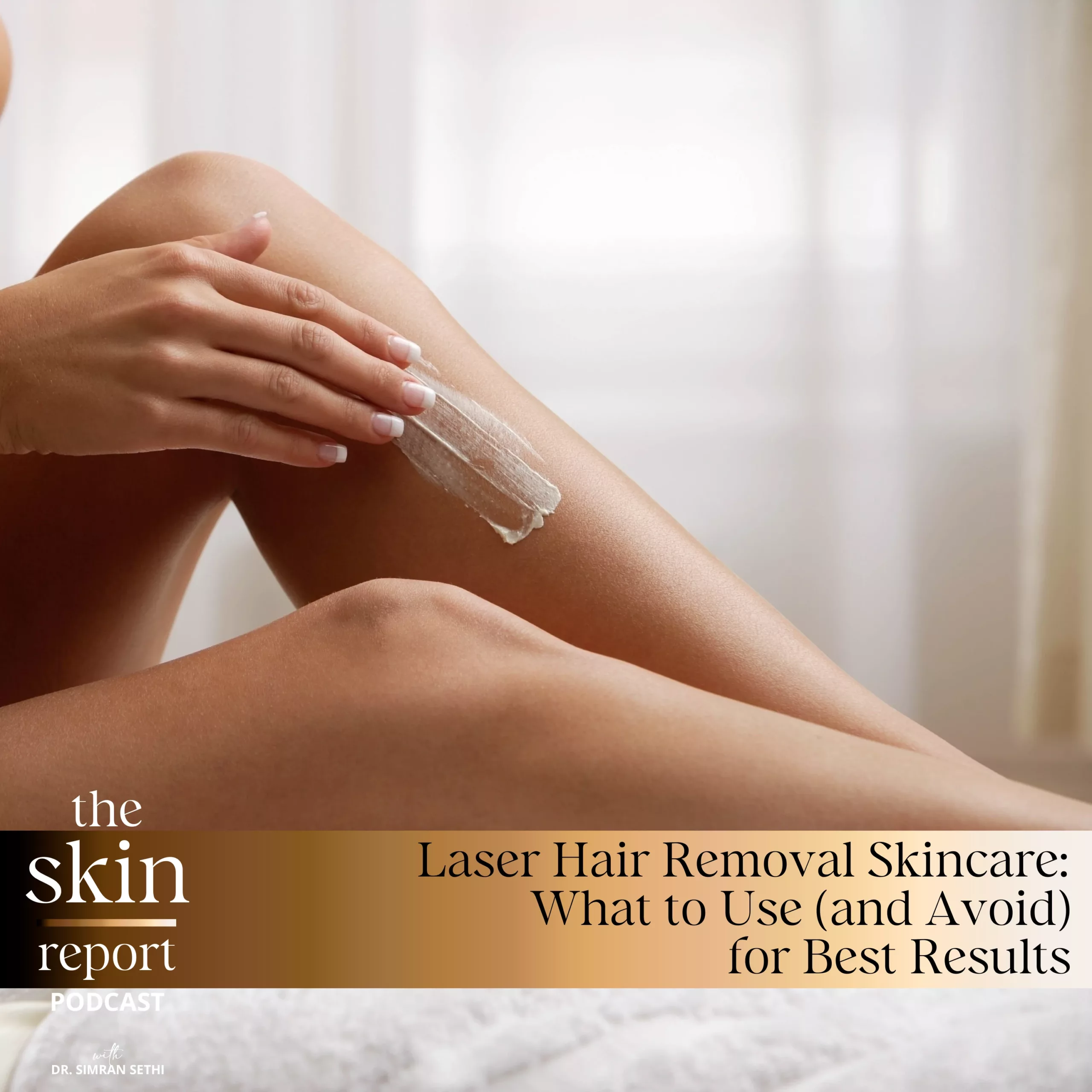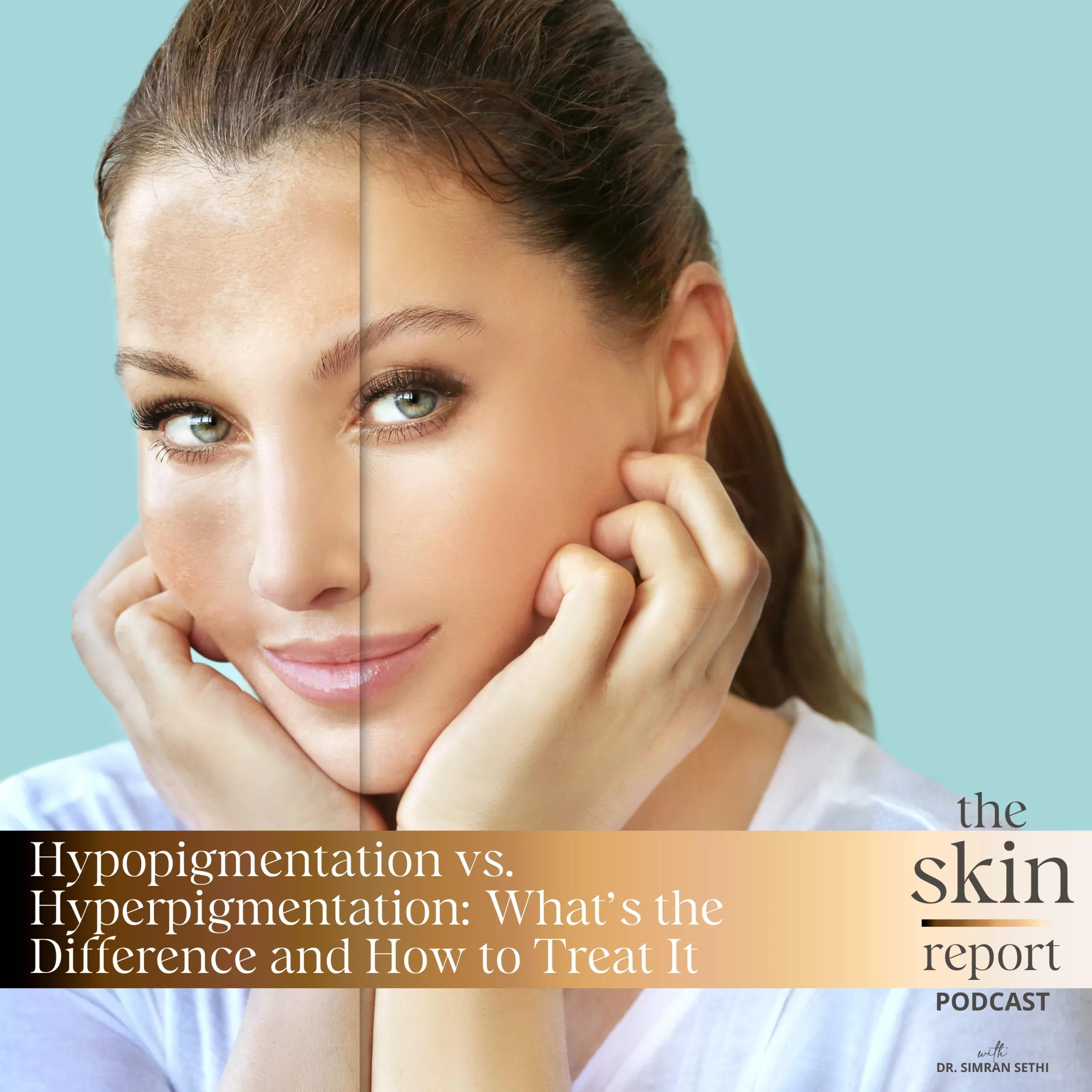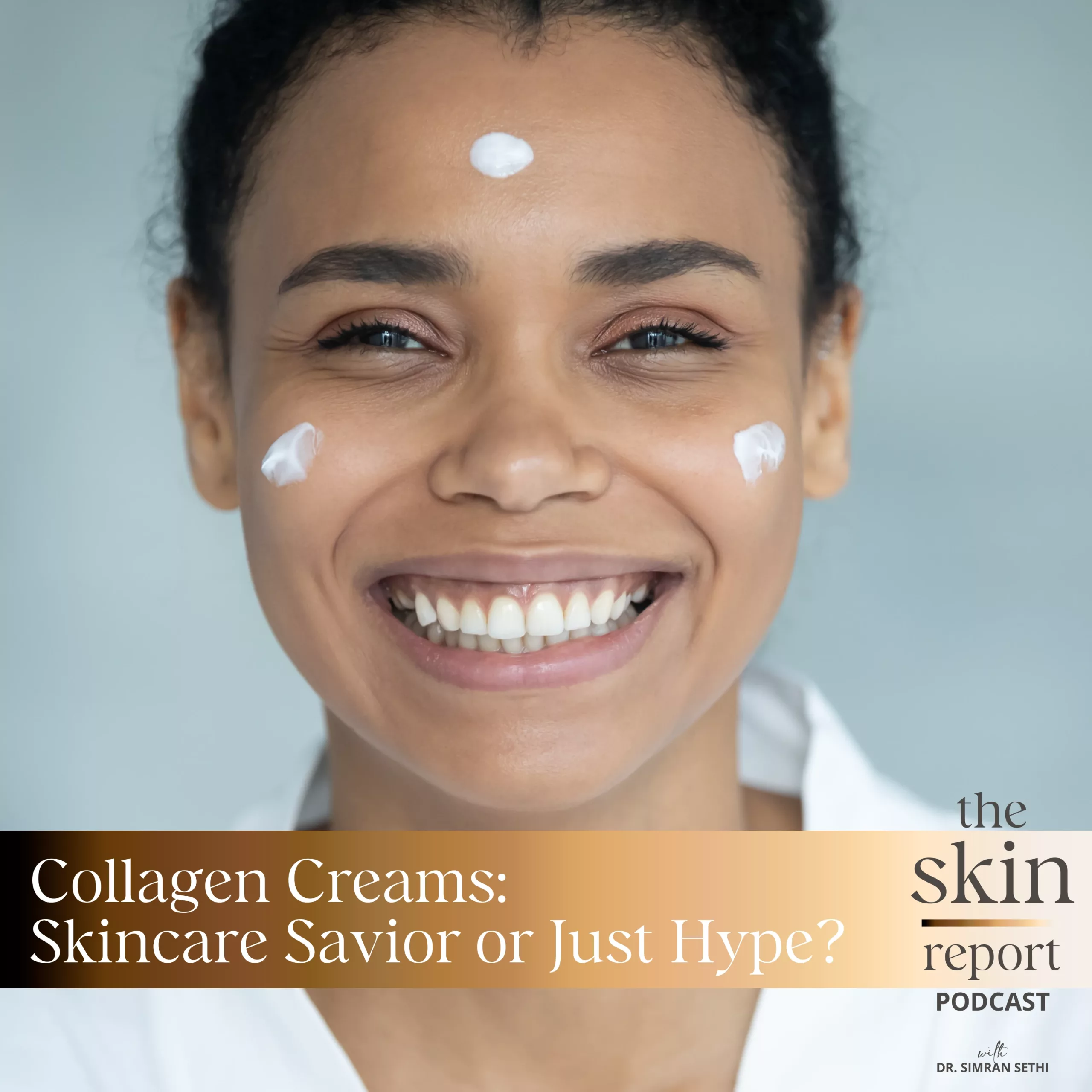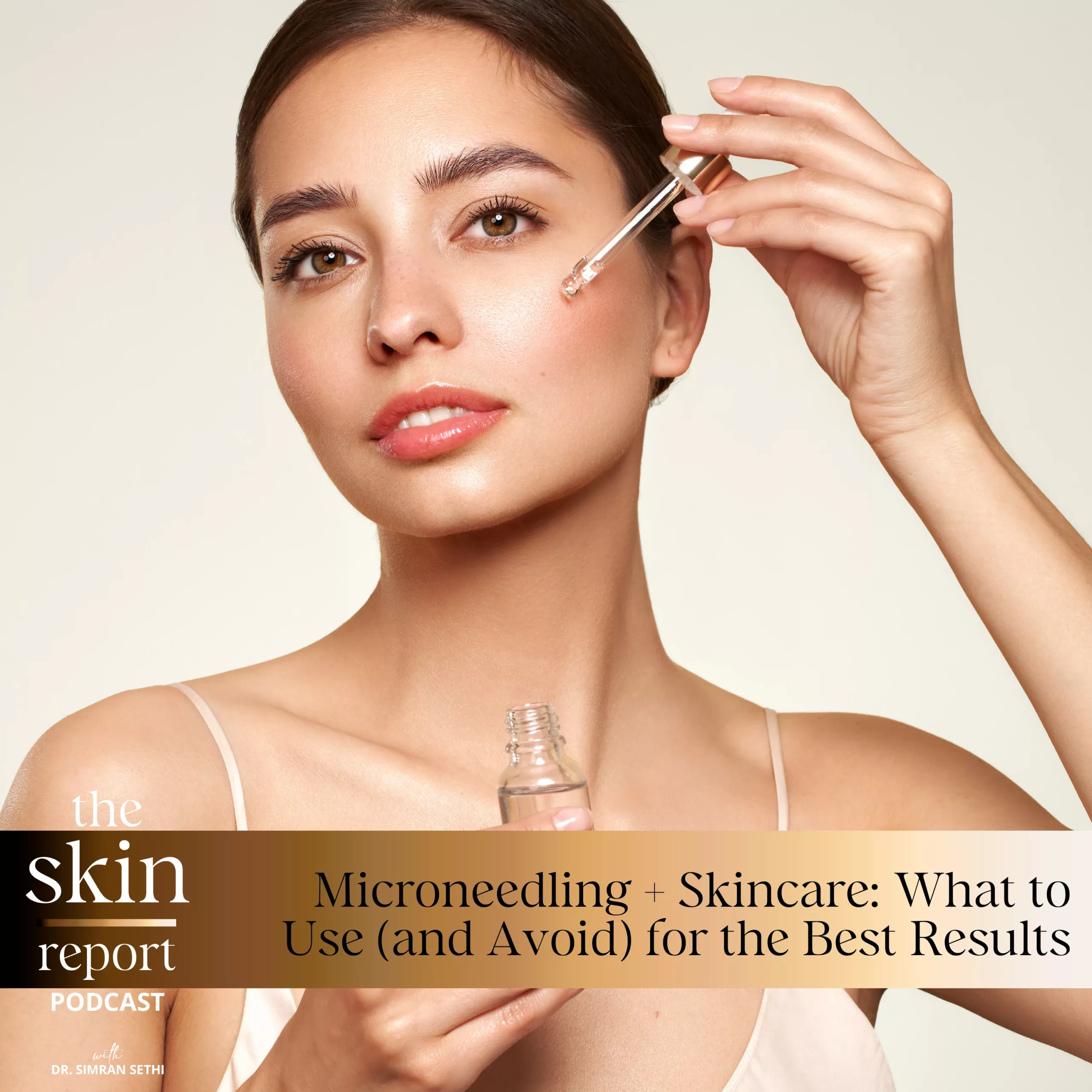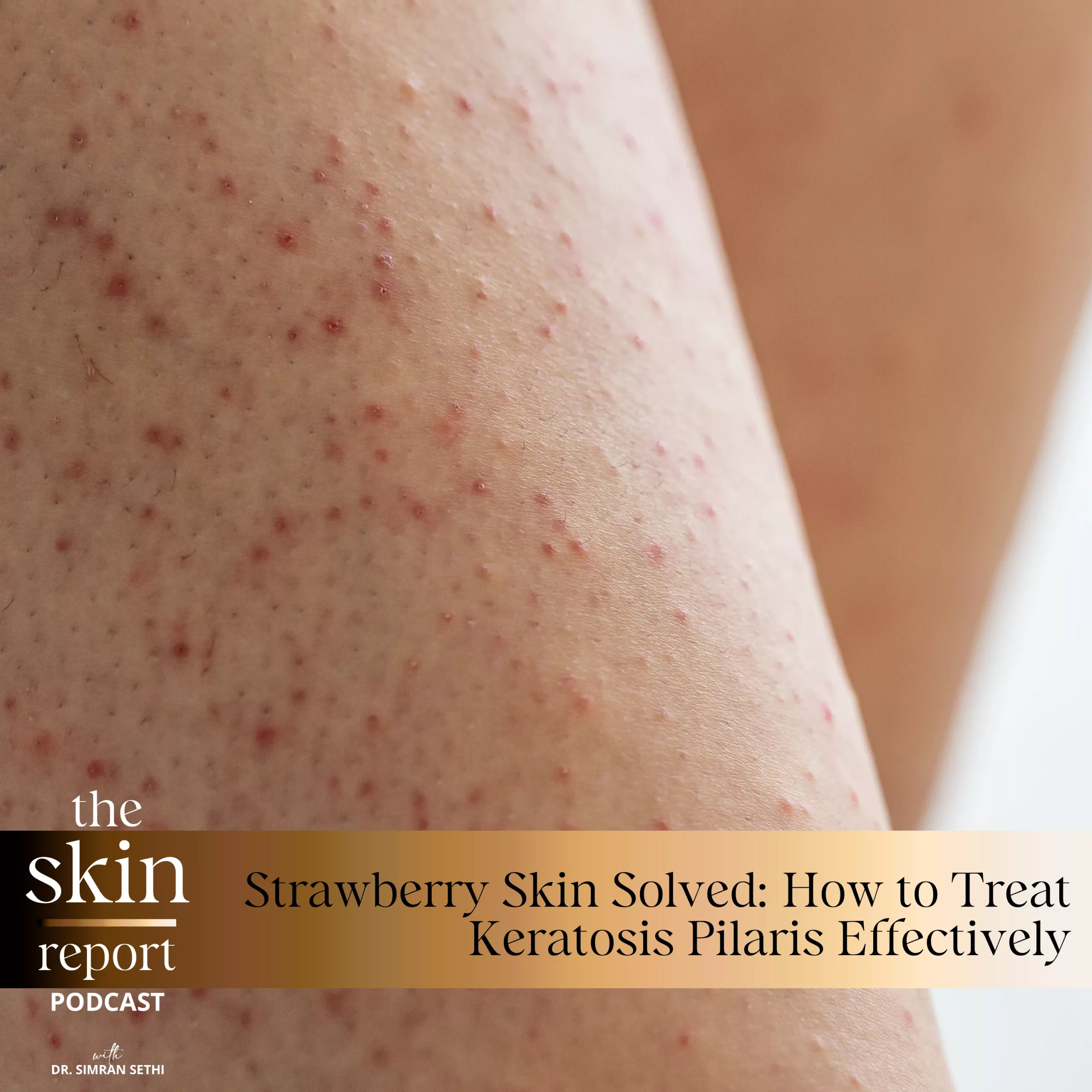The beauty industry is a vast market, generating billions of dollars yearly from customers worldwide. The skincare industry is a large part of this, so why is it so difficult for people of color to find skincare products formulated for their skin needs? Unfortunately, the strong presence of racism, colorism, and euro-centric beauty standards in the beauty industry has led to the skin care industry’s active exclusion of people of color.
The Skin Report is a podcast created to educate listeners on methods to improve skin health for people of all ethnicities and ages. On this episode, host Dr. Sethi discusses the skincare industry: what’s wrong with it, why, and how it can be improved. While there is much demand for skin care products aimed toward people of color, not many exist on the market today. We will discuss why this is, covering topics including the lack of research on darker skin tones, the lack of diversity within the skincare industry itself, and the lack of consideration for melanated skin when developing skincare products. Tune in to this episode to learn more about the skin care industry’s problems with inclusivity and how they can improve this by formulating effective and safe products for people of color.
Beauty Instagram: https://www.instagram.com/renewmd_beauty/
RenewMD Beauty Medical Spas, California: https://renewmdwellness.com/
This transcript was exported on September 13, 2022 -view latest version here.
Skin care can sometimes feel overwhelming. Whether it’s finding the right products, ingredients or treatments, there’s a lot out there, but not always for women of color. That’s why I set out to educate myself and others so that we can all feel beautiful in our skin. Hello and welcome to The Skin Report. I’m Dr. Simran Sethi, an internal medicine doctor, mom of three, and CEO and founder of RenewMD Medical Spas and Skin by Dr. Sethi.
We’re going to be doing something a little different. In fact, for the entire month of September, we’ll be doing a deep dive into the relationship between people of color and the skincare industry. The past, the present, and the future. Last week, we defined people of color, who we are and what our skin can do. Today we’ll be examining how the skincare industry excludes and dismisses non-white individuals.
The beauty industry is a mammoth of a market. The numbers from each study vary, but it is estimated that the global beauty market generated $511 billion in 2021. The US and Asia Pacific accounted for about 60% of this. For numerous reasons the beauty industry continues to grow with no signs of slowing down.
Within the beauty industry, the skincare industry is making ground. In 2020, the US skincare industry became the most lucrative in the world at $17.6 billion. In 2022, it’s estimated the industry will reach $19.5 billion. I know I’ve thrown a lot of statistics your way, but I want to convey just how powerful the skincare industry is. There are hundreds of studies, thousands of products, and yet people of color often struggle to find products that work for them. And it’s not for lack of trying.
Unfortunately, many industries in the US have racist roots which permeate every other area of the market. The skincare and beauty industry as a whole have a strong presence of racism and colorism. Unfortunately, these systems are heavily tied to the beauty standard itself: thin, white and Eurocentric. There are many layers to this, starting with active exclusion towards people of color.
In our previous episode, we discussed how the presence of more melanin influences how people with darker skin respond to products and the environment. I would highly recommend going back and listening to that episode as many of the concepts we’ll touch on today are built upon what we learned last week. Due to melanin, many products that work for skin tones I through III simply aren’t helpful for skin tones IV through VI. Unfortunately, most products are geared towards lighter skin. And all of this starts with research.
In our very first episode, I discussed a 2020 quantitative analysis conducted by the Journal of the American Academy of Dermatology, or JAAD. I want to recap that study for you today. The JAAD found that across 58 studies over 20 years, 75% of participants in research studies were white. They were also unable to find any studies of large peer-reviewed research on conditions specifically for women of color. Of the 70,000 studies conducted on complaints that are common in people of color, only 1.6% included skin of color in the clinical study. This is a staggering statistic and essentially explains why the skincare market is the way it is today. Until there are actual studies done for women of color, products that are just marketed for them will not work. And unfortunately, product research is not the only area that people of color are excluded. More on that when we return.
While it can be an uncomfortable topic, we must look at why this exclusion of people of color occurs. Is it through lack of demand? If white people are the majority in the US, it would make sense that the majority of research is done for them. Well, it’s a bit more complicated than that. You see, non-white customers in the US have a huge buying power despite having less options. Sometimes they have a larger buyer power than their white counterparts. With Asian Americans this is the case.
A 2021 Nielsen IQ survey found that Asian Americans spend 23% more on beauty products than the average US consumer. Black women, for example, spent 6.6 billion on beauty in 2021, which is about 11% of the total US beauty market. In comparison, the Black population of overall US is only about 12%. What these statistics are telling us is there is a demand. Yet without research, how can it be met?
The lack of research on darker skin tones is more insidious than just education, although that’s equally alarming. Without proper education, both researchers and consumers do not fully understand the effects of certain ingredients on darker skint ones. Even if a person of color has influence, such as a social media star, a beauty journalist, or even a skincare professional, they may not have enough data or accurate data to back up claims. This means that any person who wants to include those with darker skin tones must conduct their own research. A large hurdle for anyone, even professionals. This also points to a larger problem, the lack of diversity within the skincare industry itself.
The MBS Group and CEW UK partnered to sponsor study on diversity in the beauty industry in all of Europe. They found that only 10% of individuals on boards for beauty brands were non-white. Less than 10% of those on executive committees were non-white. The greatest representation at the leadership level was for direct reports, which hovered at around only 20%. The US had more bleak findings. Black-founded and Black-owned beauty brands in the US make up only 2.5% of revenue despite Black consumers spending 11% of all total revenue. And for an industry built on the money that women spend and earn, over two thirds of executives in the beauty industry are men. So what does this all mean? Why is it important to zoom out and take the whole industry at a glance?
Research is a foundation for any industry, including and especially for skincare. Yet when we exclude people of color from research as participants, as researchers themselves, as product designers, brand owners and more, it impacts all areas of the market. In other words, the foundation itself is shaky. Not only do skincare professionals suffer but so do consumers. There are few, if any, products that target issues that people of color specifically face despite the need. On top of that, the current products that are out there for acne, dark spots, and more may not be as effective for more melanated skin and can often worsen the problem.
Now, I want distinguish that this is not because types IV through VI are exotic or unique. In fact, this language further others those who are not white. Rather, the reality is that most products on the US skincare market are formulated without melanin in mind, especially as melanin is not considered a factor in most research. Even more so, many products that are available to women of color help to perpetuate a Western European beauty standard of lightskin and straight hair. Products with bleach for skin lightening, for example, are extremely dangerous to consumers no matter the concentration and yet are still marketed to those with darker skin tones. There’s also greater disconnect between what consumers want and what the brands think they want. For example, 68% of consumers want see more diversity in beauty ads. Is it enough to hire more diverse models to show off products, look inclusive, even if those products were not developed with their skin tonein mind? We’ll answer that when we return.
While there’s certainly progress being made with people of color-owned brands, as well as more mainstream brands finally catching on, the diversity, equity, and inclusion or DEI efforts can’t just be trendy. Brands need to go deeper than just including more women of color in ads. It must include people of color being encouraged within and by the industry to create products, become a professional, or makes strides in their own ways. You see, it’s not enough to justthrow in another foundation or a cream geared towards darker skin when there are five or even ten products for lighter women in the same line. Products need to be research-backed and diverse themselves, catering to comprehensive needs of people of color. Every skin is different and more melanated skin is no different. Some is dry, oily, normal or a combination. So products need to reflect this while also keeping melanin in mind.
Every time I see a brand market a serum for darker skin tones, I actually feelinsulted that the brand thought that all someone with my skin tone needs is one serum while the rest of the line has a robust selection of skincare products for lighter skin. The only industry in beauty that has made more strides in actual inclusivity is makeup. We now have darker foundations but there is still a lot of room for improvement. For example, many makeup brands will just add more red pigment to darken their foundation. What about those skin tones with undertones other than red?
Last but not least, what about the customer experience and preference? Again, going back to my earlier point, people of color also deserve a variety of different textures, viscosities, and feel in their products. They should not have to suffice with one new lipstick shadewhile colors for lighter skin tones get their new lipsticks in matte, satin, semi-gloss and or a lip gloss.
We simply need more advocates within the industry, more research and more products available. This is a huge part of why I started RenewMD and Skinby Dr. Sethi. I wanted to create a place where women of all skin tones, ages, and types could come find support and science-backed advice. People of color must have as many options as white people with their skincare products, including products that address their specific challenges. We cannot formulate effective and safe products for people of color if we do not include them in the industry itself, from participants to researchers to CEOs and more.
If you’d like to learn more about science-backed skincare or medical aesthetic treatments, please subscribe to and turn on notifications for The Skin Report so you’ll always know when a new episode is up. We have a newsletter that you can sign up for on theskinreportbydrsethi.com so that you can stay up to dateon all our new episodes, blogs, products, and more. Additionally, if you have a skincare question or want to make an episode topic recommendation, please message me at renewmdwellness.com, which is linked in my show notes and I’ll be sure to answer your question in an episode soon. Thanks for listening, and until next time, love the skin you’re in and celebrate your beauty.
Transcript by Rev.com


